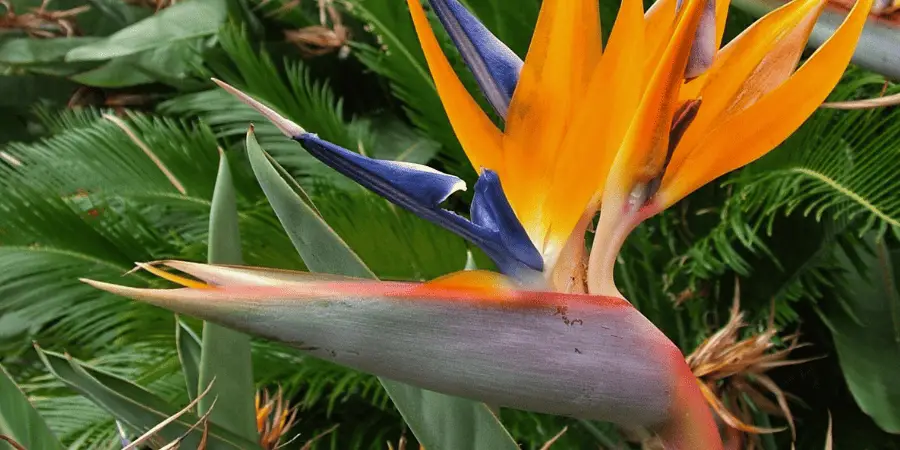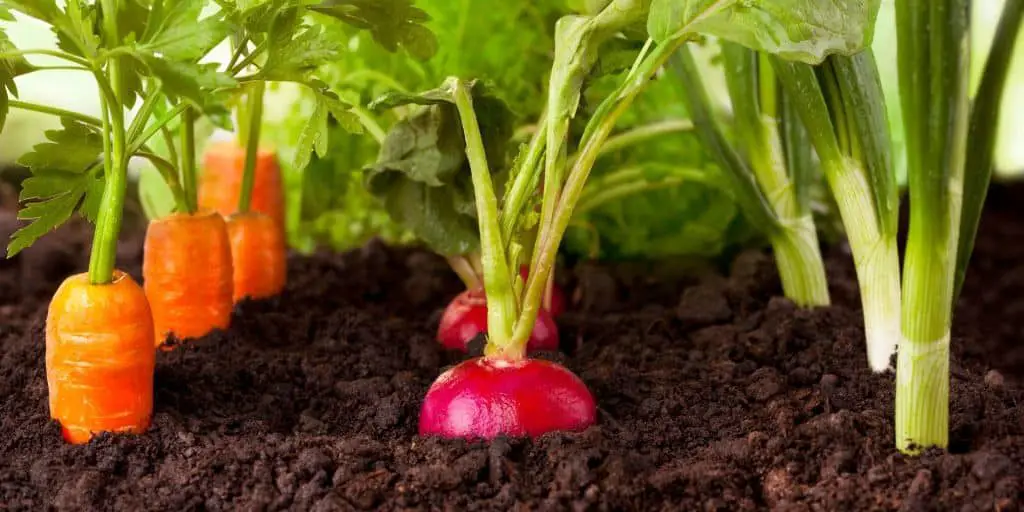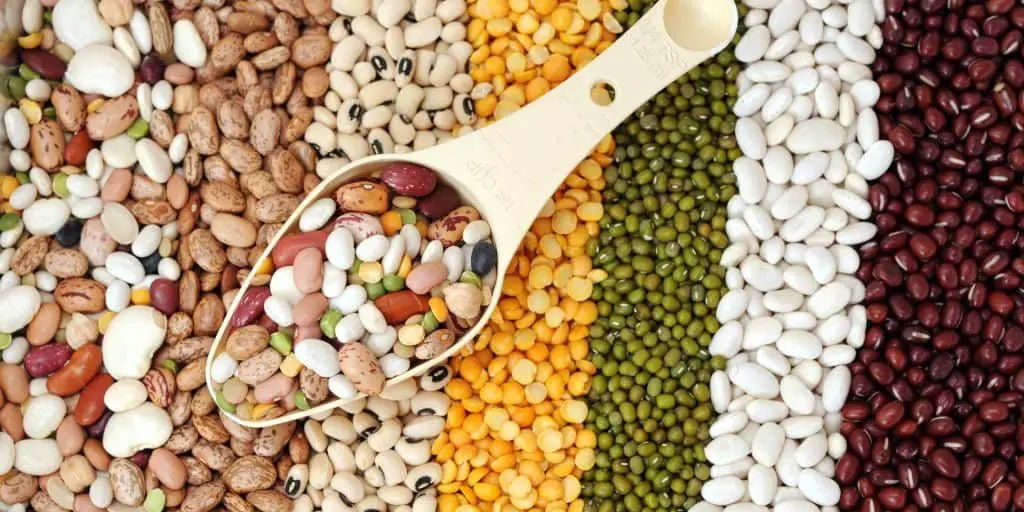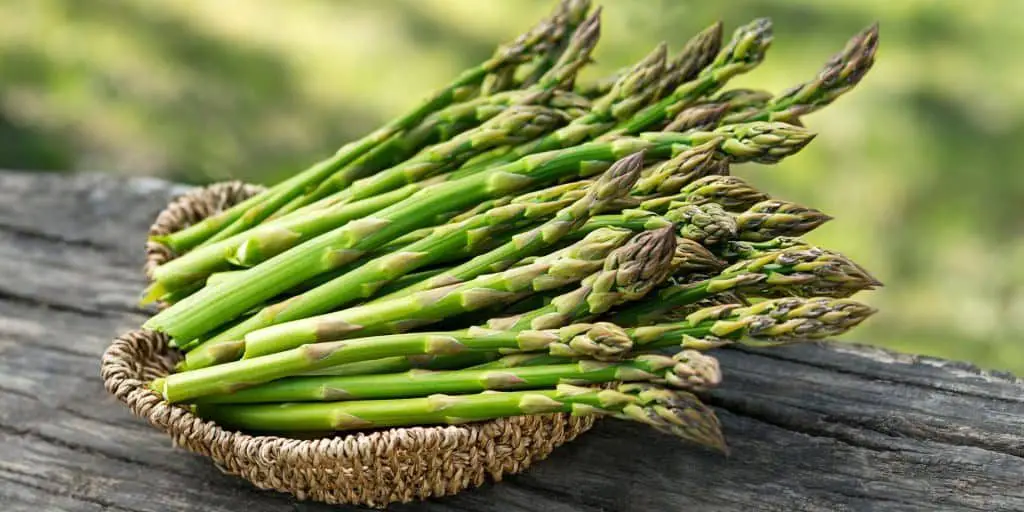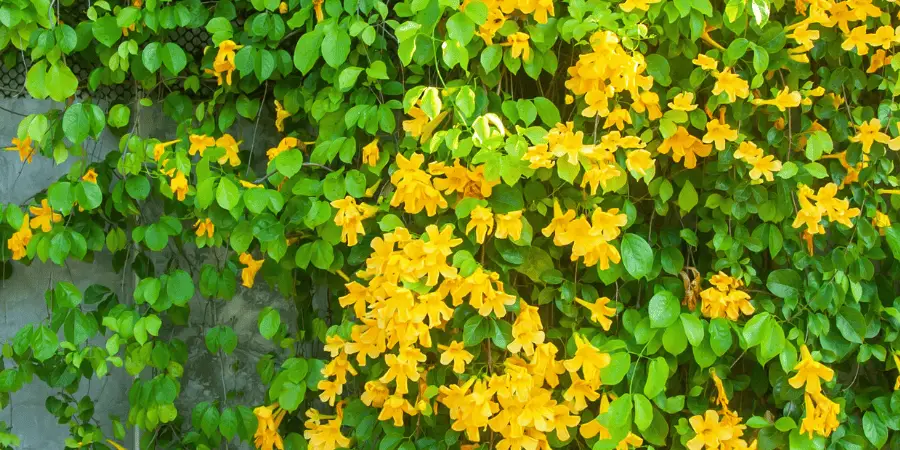
Esperanza Plants: Growth and Care
Esperanza plants, also known as Yellow Bells or Tecoma stans, are a popular choice for many gardeners due to their vibrant yellow flowers and lush green foliage. They are relatively easy to care for, making them a great option for both novice and experienced gardeners. In this article, we will delve into the world of esperanza plants care, providing you with all the information you need to grow and maintain these beautiful plants.
Getting Started
Botanical and Common Names:
Esperanza plants, also commonly known as yellow bells or yellow bells of Texas, are shrubs or small trees with bright yellow, bell-shaped flowers. The scientific name is Tecoma stans, and they belong to the Bignoniaceae family.
Origin:
Esperanza plants are native to the American tropics and subtropics, but they can now be found throughout the world. They are popular garden plants in warm climates, especially in the western and southern United States.
Best Growing Zones:
Esperanza plants can be grown in USDA hardiness zones 8B, 9, 10 and 11. They prefer full sun and well-draining soil with a pH of 6.0 to 6.5. They can tolerate temperatures down to 10°F, but they may suffer damage if temperatures dip below that.
Mature Height and Width
Esperanza plants typically reach a height of 3 to 8 or 9 feet and can reach a width of 4 to 6 feet. They can be pruned to shape and maintain size if desired.
Sun & Shade Requirements:
Esperanza plants prefer full sun to partial shade exposure. They can handle a variety of temperatures, but prefer warm climates with plenty of sunshine.
Bloom Time:
Esperanza plants typically bloom for about two months, starting in late June and lasting until mid-August. However, they can bloom from April all the way to November. The blooms are quite long-lasting, and the plants can be kept in bloom for up to three months with proper care and maintenance. After the blooms fade, the plants will produce small seed pods that can be harvested and saved for next season.
Foliage Characteristics:
Esperanza plants have dark green, glossy leaves with a slightly serrated edge. The leaves are oval-shaped and generally measure between 2 and 4 inches in length. The plants also produce small white flowers that are often tinged with pink. The blooms are clustered together in tight bunches and can be quite showy.
Common Varieties
Esperanza plants come in a variety of colors, including yellow, red, and pink. The most common variety is the yellow Esperanza plant, which can be identified by its bright yellow flowers. Red and pink varieties are also available, and these typically have darker colored foliage. The plants can also be found in a variety of heights, ranging from 2 to 6 feet tall.
Planting Esperanza
When to Plant
Esperanza plants should be planted in the spring or early summer months when the temperatures are consistently warm. It is important to ensure that the soil is at least 65°F before planting, as this will help the plant to establish itself more quickly. It is also important to avoid planting in areas that are prone to frost, as the plants may not survive.
Choosing the Right Location
Esperanza plants are best suited to sunny, warm climates with plenty of air circulation. They should be planted in an area that receives plenty of direct sunlight, as this will help the plant to thrive. It is important to avoid planting in areas that are too shady, as this can lead to weaker growth and shorter flowering periods. It is also beneficial to plant in an area with good drainage, as this will help to prevent the roots from becoming waterlogged.
How Far Apart
When planting Esperanza plants, it is important to leave enough space between each plant for adequate air circulation. Generally, the plants should be planted in clusters of three to five, with each plant spaced at least 3 feet apart. If planting in rows, it is best to space each row at least 4 feet apart to ensure that the plants have enough room to grow. If the plants are planted too close to one another, this can lead to overcrowding, which can stunt their growth and reduce their flowering potential.
Soil Preparation Before Planting
Before planting Esperanza plants, it is essential to prepare the soil. The soil should be well-draining and amended with organic matter such as peat moss or compost. The soil should also be slightly acidic with a pH of around 6.5. Additionally, the soil should be kept moist but not overly wet, as too much water can lead to root rot. After amending the soil, it is important to dig a hole that is twice the size of the Esperanza plant’s root ball. This will ensure that the plant’s roots have plenty of room to spread and grow.
How to Plant
When planting an Esperanza plant, it is important to choose a suitable location that receives full sun. Start by preparing the hole by digging it slightly larger and deeper than the root ball. This will allow the roots to spread out easily.
Before placing the root ball in the hole, gently loosen the roots and remove any damaged or diseased parts. Then, carefully place the plant in the hole, making sure that the top of the root ball is level with or slightly above the surrounding ground.
Next, backfill the hole with the amended soil, which can be a mixture of compost and native soil. As you backfill, gently firm the soil around the roots to eliminate any air pockets.
After planting, water the Esperanza plant thoroughly to settle the soil and ensure good root-to-soil contact. Apply a layer of mulch around the plant, leaving a small gap around the base to prevent moisture buildup. Mulching helps retain moisture, suppresses weed growth, and provides insulation for the roots.
Planting from Seeds
If you’d like to grow Esperanza from seeds, start by soaking the seeds in water overnight to soften the hard outer shell. After soaking, sow the seeds in a pot filled with a light, well-draining potting mix. Keep the soil moist, but not soggy, and place the pot in a warm, sunny location. It can take up to three months for the seedlings to emerge, so be patient. Once the seedlings are about five inches tall, they can be transplanted into the garden.
Propagation from Cuttings
Propagating Esperanza from cuttings is an easy and successful way to create new plants. To do this, use a sharp knife or pruning shears to take cuttings from healthy, mature plants. The cuttings should be about four to six inches long and contain at least three pairs of leaves. Place the cuttings in a pot filled with moist, well-draining potting mix and cover with a clear plastic bag. Keep the pot in a warm, sunny location and mist regularly to keep the soil moist. The cuttings should be rooted in about four to six weeks.
Can They Grow in a Container?
Yes, Esperanza plants can easily be grown in containers. When planting an Esperanza in a container, it is important to choose a pot that is large enough to accommodate the plant’s root system. Use a pot with drainage holes in the bottom and fill it with a potting mix that is well-draining and rich in organic matter. Place the container in a location that receives full sun for at least six hours per day and water the plant regularly. Make sure to fertilize the Esperanza every few weeks during the growing season.
Feed container-grown plants with a diluted water-soluble 20-20-20 or Host agro fertilizer every other week, or use controlled-release granules according to the formula recommendation.
Planting Mistakes to Avoid
When planting an Esperanza plant, it is important to avoid making common planting mistakes that can cause the plant to struggle in its new environment. For example, planting the Esperanza too deeply can cause the roots to drown and rot, so make sure that the top of the root ball is level with or slightly above the surrounding soil. Planting the Esperanza in a location that is too shady can also lead to poor growth and may even cause the plant to die. Additionally, it is important to avoid planting the Esperanza in a location that is prone to flooding, as the plant is not tolerant of wet soil.
General Care for Esperanza Plants
Watering
Esperanza plants should be watered deeply, but not too frequently. The soil should be allowed to dry out between watering in order to prevent root rot. If the soil feels dry to the touch, it is time to water the plant. It is also important to note that overwatering can cause the Esperanza to suffer from root rot, so it is best to err on the side of caution when it comes to watering.
Fertilizing
Fertilizing an Esperanza plant is important for its health and growth. During the growing season, it is recommended to fertilize the plant with an organic fertilizer every 2-3 weeks. This will help the plant to grow strong and healthy. It is also important to make sure that the fertilizer is well-balanced, as too much nitrogen can cause the plant to become leggy.
Pruning
Pruning an Esperanza plant is also essential to its health and growth. Pruning should be done in late winter or early spring to control the shape and size of the plant. It is important to remove any dead or diseased branches, as well as any branches that are crossing and rubbing against each other. This will help keep the plant healthy and encourage new growth. Pruning can also help to open up the center of the plant, allowing for better air circulation.
Seasonal Care
Esperanza plants are fairly low-maintenance, but they do require some seasonal care. During the summer months, water the plant regularly to keep the soil moist but not soggy. Fertilize the plant every few weeks with a balanced fertilizer to promote healthy growth. In the autumn months, reduce the amount of water and fertilizer given to the plant as it begins to slow its growth.
Esperanza Plants & Pets/Wildlife
Toxicity for Pets
Esperanza plants are not considered toxic to pets, but they can cause stomach upset if ingested in large quantities. If you have pets, it is best to keep them away from the esperanza plants to avoid any potential problems.
Pollinators
Esperanza plants are attractive to many different types of pollinators such as bees, butterflies, and hummingbirds. Planting a variety of esperanza plants will provide a great environment for pollinators to thrive in your garden. To attract more pollinators, be sure to plant a variety of colours and shapes of esperanza plants and keep them blooming throughout the season. Additionally, planting native species of esperanza plants is a great way to attract more pollinators to your garden.
Other Wildlife
Esperanza plants can provide a great habitat for other wildlife, such as amphibians, reptiles, and birds. The leaves of esperanza plants provide great shelter for smaller animals, while their bright flowers attract a variety of birds and other wildlife. Planting a variety of esperanza plants in your garden will create a great environment to attract and sustain all types of wildlife. Additionally, using organic gardening techniques and avoiding the use of pesticides and herbicides will help create an even more inviting environment for these animals.
Pests and Diseases
Esperanza plants are relatively resistant to pests and diseases. However, they can occasionally be affected by aphids, whiteflies, and spider mites. Regular inspection of your plants and early intervention can help keep these pests at bay.
Most Common Pests and Remedies
Aphids, tiny creatures with soft bodies, are widely recognized as the primary culprits when it comes to pests that pose a threat to the flourishing of Esperanza plants. These pesky insects, characterized by their insatiable appetite for the sap of the plant, have the potential to wreak havoc on its well-being, leading to the plant’s growth being hindered and its overall appearance becoming disfigured and abnormal. Luckily, there are various methods available to combat these pesky intruders, with the simplest approach being a thorough washing of the affected plants using a forceful stream of water. However, in instances where the infestation reaches a more severe stage, resorting to the utilization of insecticidal soaps or horticultural oils would be advisable, as these remedies have proven effective in dealing with aphids by directly targeting them on the foliage.
Most Common Diseases and Remedies
Esperanza plants are also susceptible to various diseases, such as root and stem rot caused by fungi. To prevent this from happening, it is essential to make sure that the plant is planted in well-draining soil to minimize waterlogging and standing water. Additionally, it is important to avoid over-watering the plant, as this could lead to the development of root rot. If the plant has already been infected with the disease, it is necessary to remove the affected parts and then apply a fungicide solution to the healthy areas of the plant. This will help to prevent the spread of the disease and ensure that the plant will remain healthy.
Most Common Questions and Answers
Q: How often should I water Esperanza plants?
A: Esperanza plants should be watered when the soil is dry to the touch, usually about once a week. It is important to avoid over-watering the plants, as this can lead to root rot and other diseases. Make sure to water the plants deeply, so the water can reach the roots. Additionally, it is best to water the plants in the morning, so the leaves can dry off before nightfall.
Q: How much sunlight does an Esperanza Plant need?
A: Esperanza plants need at least 4 to 6 hours of direct sunlight each day in order to grow and thrive. They can tolerate some shade, but they will not flower as well in shady areas. It is best to place them in a bright and sunny location to ensure optimal growth and flowering.
Q: What kind of soil should I use for Esperanza plants?
A: Esperanza plants prefer well-draining, light, and slightly acidic soil. A soil mix that includes sand, clay, and compost is ideal. Make sure to add plenty of organic matter, such as compost, to the soil to ensure optimal drainage and nutrition for the plant. Additionally, it is important to ensure that the soil is not too wet, as this can lead to root rot and other diseases.
Q: How often should I fertilize Esperanza plants?
A: Esperanza plants should be fertilized at least once a month during the growing season with a balanced fertilizer. It is important to dilute the fertilizer to half the strength of the recommended amount, as too much fertilizer can cause damage to the plants. Additionally, it is important to avoid fertilizing the plants in the winter months, as the plants are dormant and fertilizer will not be needed.
Q: How can I encourage my Esperanza plant to flower?
A: To encourage your Esperanza plant to flower, it is important to provide it with at least 4 to 6 hours of direct sunlight each day. Additionally, make sure to fertilize the plant at least once a month during the growing season with a balanced fertilizer. Pruning the plant can also encourage flowering, as it will promote new growth and the development of flowers.
Q: What pests and diseases can affect Esperanza plants?
A: Esperanza plants are susceptible to pest and disease problems, such as aphids, spider mites, and powdery mildew. It is important to inspect the plant regularly for signs of damage or disease. Additionally, it is important to remove any dead or diseased leaves and branches to prevent the spread of the problem.
Q: How can I propagate Esperanza plants?
A: Esperanza plants can be propagated by stem cuttings or by division. Stem cuttings should be taken from the tip of the plant and should be 3 to 5 inches long. The cuttings should then be rooted in a pot of moist soil. Division is also an effective method of propagation, as the plant can be divided into smaller sections and replanted.
Q: What is the best time to plant Esperanza plants?
A: The best time to plant Esperanza plants is in the late spring or early summer when the soil is warm and moist. Planting in the fall is also possible
Conclusion
Esperanza plants are a great addition to any garden, as they are easy to maintain and are quite hardy. They are also very attractive and can bring a lot of life and color to any garden. With proper care and attention, esperanza plants will thrive and can provide years of enjoyment. By following the tips outlined above, you can ensure that the plants are healthy and vigorous, giving you many years of pleasure.
